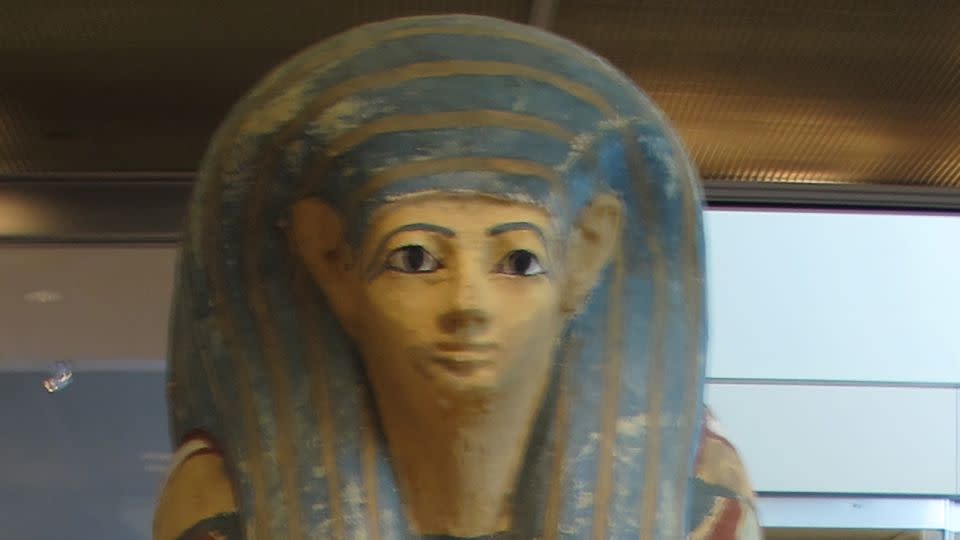Scientists recently used CT scans to examine the mummified remains of an ancient Egyptian woman known as the “screaming woman”. The study revealed that she was 48 years old when she died and stood at 1.54 meters tall. Analysis of her body showed traces of expensive embalming materials like frankincense and juniper resin, contradicting the traditional belief that a failure to remove the internal organs of a mummy indicated poor mummification. Certain health conditions, such as mild arthritis and missing teeth, were also discovered, although the exact cause of her open-mouthed expression remains unclear.
The researchers proposed that the woman’s striking facial expression could be due to a rare muscular stiffening known as cadaveric spasm, associated with violent deaths, suggesting that she may have died in agony or pain. However, the study noted that a mummy’s facial expression does not necessarily reflect their emotions at the time of death and could be influenced by various factors like decomposition and burial procedures. The discovery of the “screaming woman” mummy occurred during an expedition led by the Metropolitan Museum of Art in New York City, and her remains are currently housed in the Cairo Egyptian Museum.
The study of ancient mummies, like the “screaming woman”, provides valuable insights into ancient embalming techniques, health conditions, and funerary practices. It highlights the sophistication of mummification processes in ancient Egypt and the use of costly embalming materials. The researchers’ findings shed light on the potential circumstances surrounding the woman’s death, although the exact cause of her open-mouthed expression remains uncertain. The mummy’s preservation and appearance challenge misconceptions about mummification practices from that period and offer new perspectives on the health and life of individuals in ancient civilizations.
By utilizing advanced imaging techniques like CT scans and infrared imaging, researchers are able to uncover intricate details about ancient mummies and their history. The study of mummies like the “screaming woman” not only helps unravel mysteries surrounding ancient civilizations but also provides valuable information about health and disease in ancient populations. The well-preserved nature of mummies like the “screaming woman” offers a unique glimpse into the past and allows scientists to explore the cultural and societal practices of ancient societies. Through these investigations, researchers can expand our understanding of human history and the practices of earlier civilizations.
The analysis of the “screaming woman” mummy offers a glimpse into the unique circumstances surrounding her mummification and burial. The expensive embalming materials used for her preservation suggest a careful and meticulous process, contrary to initial assumptions based on the presence of internal organs. The study’s findings challenge traditional beliefs about ancient mummification practices and highlight the complexity and sophistication of embalming techniques in ancient Egypt. By studying mummies like the “screaming woman”, researchers can piece together the stories of individuals from the distant past and gain valuable insights into their lives, health, and culture. Through ongoing research and technological advancements, scientists continue to uncover new details about ancient mummies and their significance in unraveling the mysteries of history.








